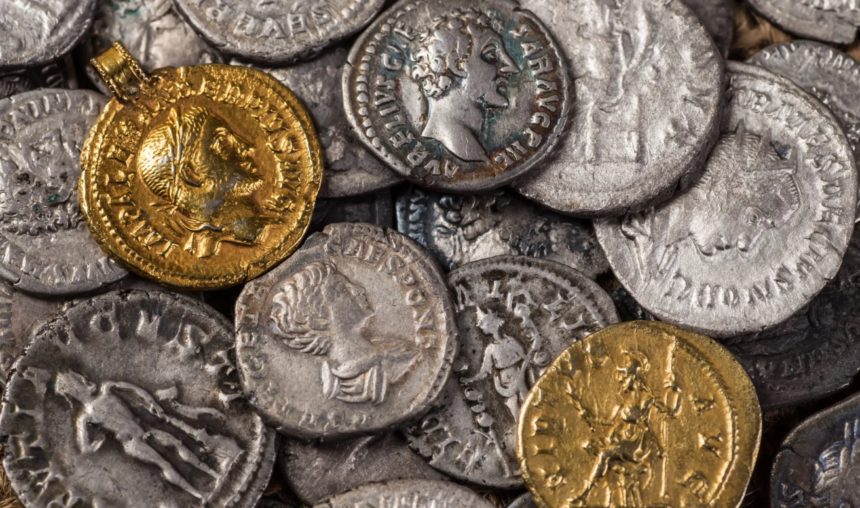Few things in history combine human creativity, economy, and culture like ancient coins. Now, toss in a healthy dose of biblical history, and you’ve got yourself a fascinating topic that blends faith, economics, and a little bit of detective work. Whether you’re a coin collector, a history buff, or someone curious about how currency played a role in biblical storytelling, you’ve come to the right place.
The Role of Money in Biblical Times
Before we jump into the specifics, it’s worth considering the role coins played in biblical times. The economy in ancient Israel and surrounding regions was a blend of barter and currency. Coins, made predominantly of silver, gold, and copper, weren’t just tools of exchange; they were symbols of power, politics, and sovereignty.
Mentions of biblical coins often underscore moral lessons, especially regarding faithfulness, generosity, and greed. If you think inflation is a modern problem, imagine the value of your coin being determined by its weight—and finding out someone shaved a little off your drachma!
Now, buckle up as we take a close look at some of the key coins mentioned in the Bible.
1. The Shekel – The Weighty Coin
Of all ancient currencies, the shekel gets top billing in the Bible. This silver coin was a standard unit of weight and currency in ancient Israel.
- Historical Significance: The shekel is mentioned extensively in the Old Testament. For example, Abraham used silver shekels to purchase the cave of Machpelah as a burial site for his wife, Sarah (Genesis 23).
- Symbolic Significance: Shekels were often tied to religious obligations. The half-shekel tax was required of every Jewish male aged 20 and above for the maintenance of the temple (Exodus 30:13).
- Fun Fact: Modern Israel’s currency is named the Israeli New Shekel—a direct nod to its ancient counterpart.
The Lesson
The shekel wasn’t just about weighty payments—it was also about bearing weighty responsibilities, particularly in the context of religious commitments. It reminds us that monetary obligations can reflect deeper spiritual allegiances.
2. The Widow’s Mite – Small But Mighty
If there’s one story about money that resonates with Christians worldwide, it’s the tale of the widow’s mite (Mark 12:41-44, Luke 21:1-4). Even if you don’t know the words, you’ve probably seen the impactful image of a widow humbly dropping her two small coins into the temple treasury.
- Historical Significance: The “mites” were likely small bronze coins called leptons—among the least valuable coins of the time.
- Symbolic Power: Though two mites were practically worthless, Jesus praised the widow for giving all she had, illustrating that generosity is not measured in monetary value but in personal sacrifice.
- Fun Fact: Today, replicas of the widow’s mite are popular among tourists and collectors, symbolizing faith and selflessness.
The Lesson
The widow’s mite teaches the timeless lesson that generosity from the heart outweighs material wealth. It’s the ultimate mic drop moment of charity.
3. The Tribute Penny – Render Unto Caesar…
This one’s a fan favorite, especially for those of us who’ve pondered the crossover between faith and taxes. The story appears in Matthew 22, Mark 12, and Luke 20, where Jesus famously says, “Render unto Caesar the things that are Caesar’s, and unto God the things that are God’s.”
- Historical Significance: The “tribute penny” is widely believed to be a Roman denarius, featuring the image of Emperor Tiberius.
- Symbolic Power: The coin and its inscription reflect the idea of political power and responsibility. By acknowledging the coin’s origins, Jesus sidestepped a political trap—and gave a profound answer.
- Fun Fact: Some collectors have spent tens of thousands of dollars on Tiberius denarius coins, making this penny worth more than its weight in silver.
The Lesson
The tribute penny sparks reflection on dual allegiances—to earthly systems and divine sovereignty. Plus, it proves Jesus had a knack for profound one-liners.
4. Thirty Pieces of Silver – A Price Too High
This is probably the most infamous instance of currency in biblical history. Thirty pieces of silver—likely Tyrian shekels—are what Judas Iscariot received for betraying Jesus (Matthew 26).
- Historical Significance: Tyrian shekels were prized for their high purity of silver and were often used for temple taxes. The fact they were used here adds chilling irony to their role in the betrayal.
- Symbolic Power: The thirty pieces of silver represented the price of a slave at the time—highlighting both the depth of Judas’ betrayal and the humanity of Christ’s sacrifice.
- Fun Fact: Scholars believe Tyrian shekels were minted in the city of Tyre, modern-day Lebanon.
The Lesson
The story of Judas’ silver warns of the spiritual costs of greed and betrayal. It’s a sobering reminder that not all currency is worth the transaction.
5. The Lost Coin – Parables That Shine
No discussion of biblical coins would be complete without referencing the parable of the lost coin (Luke 15). This parable recounts the story of a woman who loses one of her ten silver coins—and turns her house upside down until she finds it.
- Historical Significance: The lost coin was likely a drachma, a day’s wage in ancient times. For a peasant woman, losing even one coin could have serious economic repercussions.
- Symbolic Power: Jesus used this parable to illustrate God’s joy when a single sinner repents, likening it to the woman rejoicing after finding her lost coin.
- Fun Fact: Archaeologists have found drachma coins with intricate designs, demonstrating the artistry of ancient currency.
The Lesson
The lost coin highlights the value of persistence, the joy of finding what’s lost, and the immeasurable worth of each individual in God’s eyes.
Why These Coins Still Matter
You might not have a denarius rattling around in your pocket, but the lessons tied to these ancient currencies hold up today. From the widow’s mite teaching us about generosity to the tribute penny’s wisdom about dual responsibilities, these coins carry timeless moral and spiritual value.
At their core, these stories remind us that money can reveal not only our priorities but also our character. And if you’re feeling the urge to start collecting ancient coins—well, who could blame you? They’re pretty cool.















